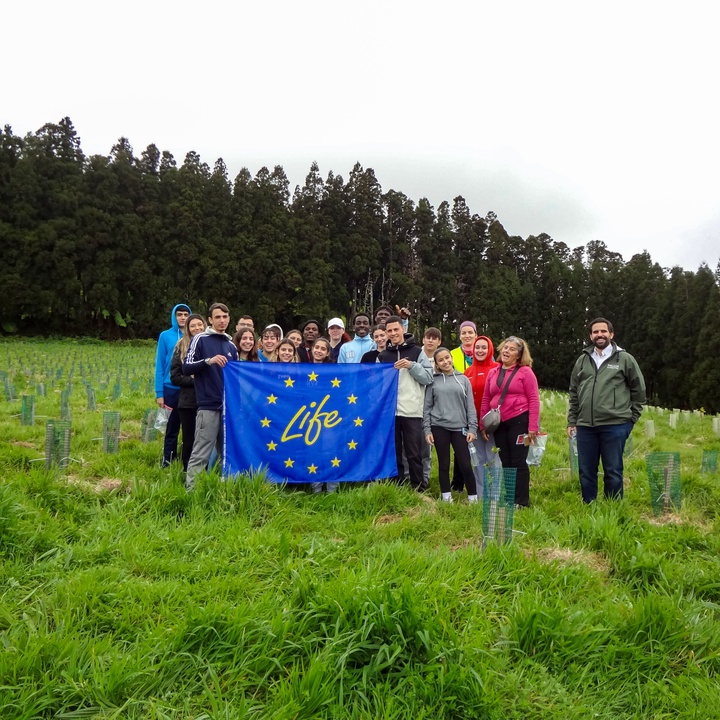Text size:
News

Visit by students from the EPROSEC vocational school from the Tourism Information and Animation Technical course to the intervention areas of the LIFE IP CLIMAZ
April 9, 2024
On 21 March, the Regional Directorate for Forest Resources received a visit from 21 students and one teacher from the EPROSEC vocational school to celebrate the International Day of Forests. The students, aged between 16 and 23, who are currently studying the 1st year of the Technician on Tourism Information and Animation, visited the intervention areas of the LIFE IP CLIMAZ project (LIFE19 IPC/PT/000004) located in Algarvia and Santo António de Nordestinho (São Miguel).
Accompanied by technicians from the Regional Directorate and the Nordeste Forestry Services, the students had the opportunity to visit the endemic plantation in the Santo António de Nordestinho (Nordeste) to produce Azorean Laurel (Laurus azorica), Azorean Holly (Ilex azorica) and Short Leafed Juniper (Juniperus brevifolia) fruit (sub-action C8.1 – Increasing capacity of DRRF's nurseries to deliver native plants needed to undertake ecosystem-based adaptation). One of the aims of this action is to provide the Forestry Services with seeds for plant production since various factors condition the availability of seeds in natural areas, such as the limited presence of specimens of some species in natural areas, the impossibility of collecting seeds in remote areas that are difficult to access; the biology of the species (existence of harvest and counter-harvest years); the climatic conditions of each year; as well as the fact that some seeds form part of the diet of many species of birdlife.
We also visited the restoration forest areas located in Algarvia (sub-action C8.3 Reconversion of existing forest to native non-production forest), where we explained the forest management process being applied to the forest public areas, which includes clear-cutting and sale of timber, specifically Japanese Cedar (Cryptomeria japonica), the reforestation of previously cut areas, as well as conservation. These areas are being re-forested with native species, which, due to their biophysical characteristics, will take on a protection function, especially in buffer areas among the water lines, around springs and in areas with steep slopes.
We hope to have contributed to the professional knowledge of these future ambassadors of nature tourism about the importance of forest management.

